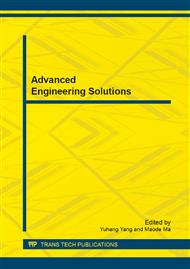p.747
p.752
p.757
p.762
p.769
p.774
p.781
p.785
p.790
Confined-Accelerated Creep Tests to Determine the Creep Reduction Factor
Abstract:
The creep characteristics of geogrids is one of the most important factors affecting its permanent in reinforced soil structures. currently, most of the creep tests are under unconfined conditions, the results deviates significantly from the real status in the application . And conventional creep tests are time-consuming and costing.In this paper, time-temperature superposition principle of geosynthetics is used to accelerate creep and shorten test time. This paper presents a new device to perform simultaneously confined and accelerated creep tests on HDPE50 geogrid . According to the results and time-temperature superposition principle of geosynthetics,the master curves are obtained . Finally the creep reduction factor of confined and unconfined conditions is analysed in the actual project .
Info:
Periodical:
Pages:
769-773
Citation:
Online since:
July 2014
Authors:
Price:
Сopyright:
© 2014 Trans Tech Publications Ltd. All Rights Reserved
Share:
Citation:


